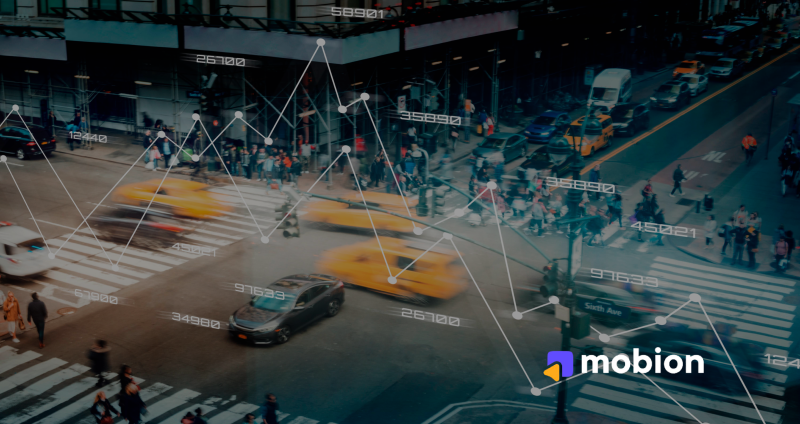Mobility Trends 2025: How to Prepare Your Business


The mobility world is moving fast — and 2025 is already bringing big changes. New tech, stricter rules, and passengers who expect more than ever are reshaping how we move around our cities. If you’re running a taxi service or any mobility business, you probably feel the pressure to keep up. That’s exactly where we at Mobion Tech can help. We’ve built tools that make your job easier — from smart taxi dispatch systems that keep your fleet running smoothly, to powerful operator software that cuts the hassle out of daily tasks, to white-label platforms you can brand as your own. Whatever stage you’re at, you can find a solution with us that fits your needs and helps you stay ahead of the game. In this article, we’ll walk you through the key mobility trends of 2025 and how our tech can help you make the most of them.
-
The Rise of AI and Automation
Artificial intelligence (AI) and automation are revolutionizing and enhancing the mobility industry. AI-powered taxi dispatch systems reduce wait times, improve fuel efficiency, and strengthen route optimization. Automated decision-making enables predictive maintenance, optimizes vehicle usage, and minimizes downtime. For taxi operators, adopting AI-driven taxi company software ensures more efficient dispatching and increases profitability.
AI is revolutionizing operations and enhancing customer interactions. Chatbots, voice recognition, and AI-driven virtual assistants provide passengers with instant responses to queries, significantly improving the overall user experience. By incorporating AI-driven customer support within taxi operator software, businesses can reduce operational costs and maintain high customer satisfaction. Additionally, AI-backed fraud detection systems help taxi businesses mitigate risks related to payment fraud and identity verification.
-
The Growth of Electric and Sustainable Mobility
As sustainability moves to the forefront of global priorities, electric vehicles (EVs) and hybrid fleets are no longer just an emerging trend - they represent a real commitment to a cleaner, greener future. Around the world, governments are tightening emissions standards and rolling out generous incentives to encourage the switch to electric. Forward-thinking taxi operators aren’t waiting for change to happen - they’re driving it, adopting EV-ready taxi management platforms that can monitor battery health, locate nearby charging stations, and track energy consumption. The most advanced taxi dispatch systems don’t just “support” EV fleets - they’re actively shaping the transition to sustainable urban transport.
But going green isn’t only about switching to electric. More operators are embracing eco-friendly business models, such as carpooling and shared ride options, to cut emissions and appeal to budget-conscious passengers. These services allow multiple riders to share a vehicle, reducing both operational costs and environmental impact. By building carpooling tools directly into white-label taxi dispatch platforms, companies can meet the needs of environmentally aware customers while getting the most out of their fleets. With Mobion’s Corporate Admin, operators can easily manage ride-sharing requests in one place, fine-tune vehicle assignments, and keep a close eye on performance across all sustainability initiatives.
-
Expansion of Multi-Modal Transportation
In 2025, mobility will not be limited to taxis alone. The norm is the integration of taxis, ride-hailing, e-scooters, and public transit into a single platform. Companies should embrace this comprehensive approach by incorporating white-label taxi dispatch software that supports diverse transportation options. Offering customers seamless mobility solutions enhances user experience and expands business opportunities.
Partnering with micro-mobility services can help taxi companies expand their reach to new customer segments. Integrating taxi dispatch systems with bike-sharing and scooter-sharing platforms allows businesses to cater to short-distance travelers, thus increasing ride volume and revenue potential. A multi-modal approach also improves first- and last-mile connectivity, making public transportation more efficient and convenient for users.
-
The Importance of Data and Predictive Analytics
Big data and predictive analytics play an essential role in mobility services. Businesses can make data-driven decisions by analyzing trip data, customer behavior, and demand fluctuations. Implementing taxi company software with analytics capabilities allows taxi operators to optimize pricing strategies, reduce idle time, and improve overall efficiency. Predictive analytics also help demand forecasting, allowing businesses to allocate resources more effectively.
Customer data insights can also be leveraged to create personalized promotions and loyalty programs. Taxi companies can tailor offers that increase user engagement and retention by understanding rider preferences and travel patterns. Additionally, real-time data analytics help businesses respond proactively to traffic congestion, ride demand spikes, and weather conditions, ensuring smoother and more reliable service.
-
Enhanced Customer Experience and Personalization
Customer expectations are higher than ever. Passengers demand seamless booking experiences, real-time tracking, and personalized services. Best taxi dispatch software integrates AI-driven personalization, offering tailored recommendations, loyalty programs, and dynamic pricing based on user behavior. By improving customer engagement through personalized experiences, businesses can increase retention rates and brand loyalty.
Another growing trend is the implementation of gamification elements in taxi apps. Reward-based incentives such as points, discounts, and referral bonuses encourage repeat bookings and customer loyalty. Enhanced UI/UX design in taxi operator software ensures a seamless user experience, making it easy for passengers to book rides, make payments, and leave feedback.
-
Integration of Blockchain for Transparency and Security
Blockchain technology is gaining traction in mobility because it enhances security and transparency. White-label taxi dispatch software with blockchain integration ensures secure payment processing, tamper-proof ride records, and fair driver earnings distribution. The decentralization of ride data builds trust among customers and prevents fraudulent activities.
Smart contracts powered by blockchain technology can streamline financial transactions, eliminating intermediaries and reducing costs for businesses and drivers. Taxi companies adopting blockchain solutions can enhance payment security, enforce fair commission structures, and create an immutable record of ride transactions, ensuring greater accountability.
-
The Shift to Subscription-Based Mobility Models
Subscription-based mobility services are rising in popularity. Instead of traditional pay-per-ride models, customers prefer mobility-as-a-service (MaaS) subscriptions that offer unlimited or bundled rides. Taxi operators can leverage taxi dispatch system capabilities to introduce flexible pricing plans, subscriptions, and corporate mobility packages. This shift not only increases customer loyalty but also stabilizes revenue streams.
Subscription-based models also align well with corporate travel needs. Businesses that frequently require transportation services for employees can benefit from corporate mobility packages, ensuring reliable and cost-effective transportation. Integrating subscription features within taxi company software allows for easy billing, invoicing, and ride management for corporate clients.
-
Compliance with Evolving Regulations
Governments and local authorities enforce stricter regulations to ensure the legality of ride-hailing and taxi operations. Businesses are not only complying with evolving laws related to driver licensing, vehicle i nspections, and data privacy but also promoting a safer and more secure industry. Taxi operator software that automates compliance checks and integrates with regulatory systems is necessary, as is a commitment to avoiding fines and operational disruptions.
For instance, the best taxi dispatch software includes automated background checks, and driver verification features that ensure compliance with local safety standards. Automated tax reporting and fare transparency tools help businesses adhere to financial regulations and maintain a trustworthy reputation.
How to Prepare Your Business
Keeping a taxi or mobility company ahead of the curve in 2025 isn’t about making one big change — it’s about taking a series of smart, deliberate steps that keep you competitive while the industry races forward.
- Start with the right technology. The days of running a fleet with basic dispatch tools are over. Modern platforms can predict demand, assign rides in seconds, and manage different transport modes in one place. Choosing the right one will save time, money, and a lot of stress.
- Make sustainability part of the plan. Switching to electric vehicles doesn’t have to be an all-or-nothing move. You can start with a few EVs, learn how to manage charging and range, and gradually expand from there. The key is using dispatch software that’s already designed to work with EV fleets.
- Focus on what passengers actually notice. For most riders, a good experience is simple — quick booking, no surprises on the way, and a sense that the service “gets” them. Small touches like personalized ride suggestions or smooth in-app communication can make all the difference.
- Protect what matters. In a world where data leaks make headlines, customers value companies that keep their information safe. Strong security features and blockchain-backed transactions aren’t just technical upgrades — they’re trust-builders.
- Stay ahead of the rulebook. Regulations are constantly shifting. If your software can adapt quickly to new compliance standards, you won’t be caught scrambling when changes hit.
- Let the numbers guide you. Predictive analytics isn’t just for tech giants — it can help you plan driver shifts, adjust pricing before a surge, and find the most profitable routes.
- Look beyond the meter. Revenue doesn’t have to come only from single fares. Subscription passes, partnerships with local businesses, or tailored corporate mobility packages can open new streams of income.
2025 will reward the companies that move with intention and adapt before they’re forced to. If you want to explore how the right tools can transform your service, Request Mobion demo and let’s talk about building a solution that works for your business, your drivers, and your passengers.
Ready to revolutionize your taxi business?
Choose what you need: